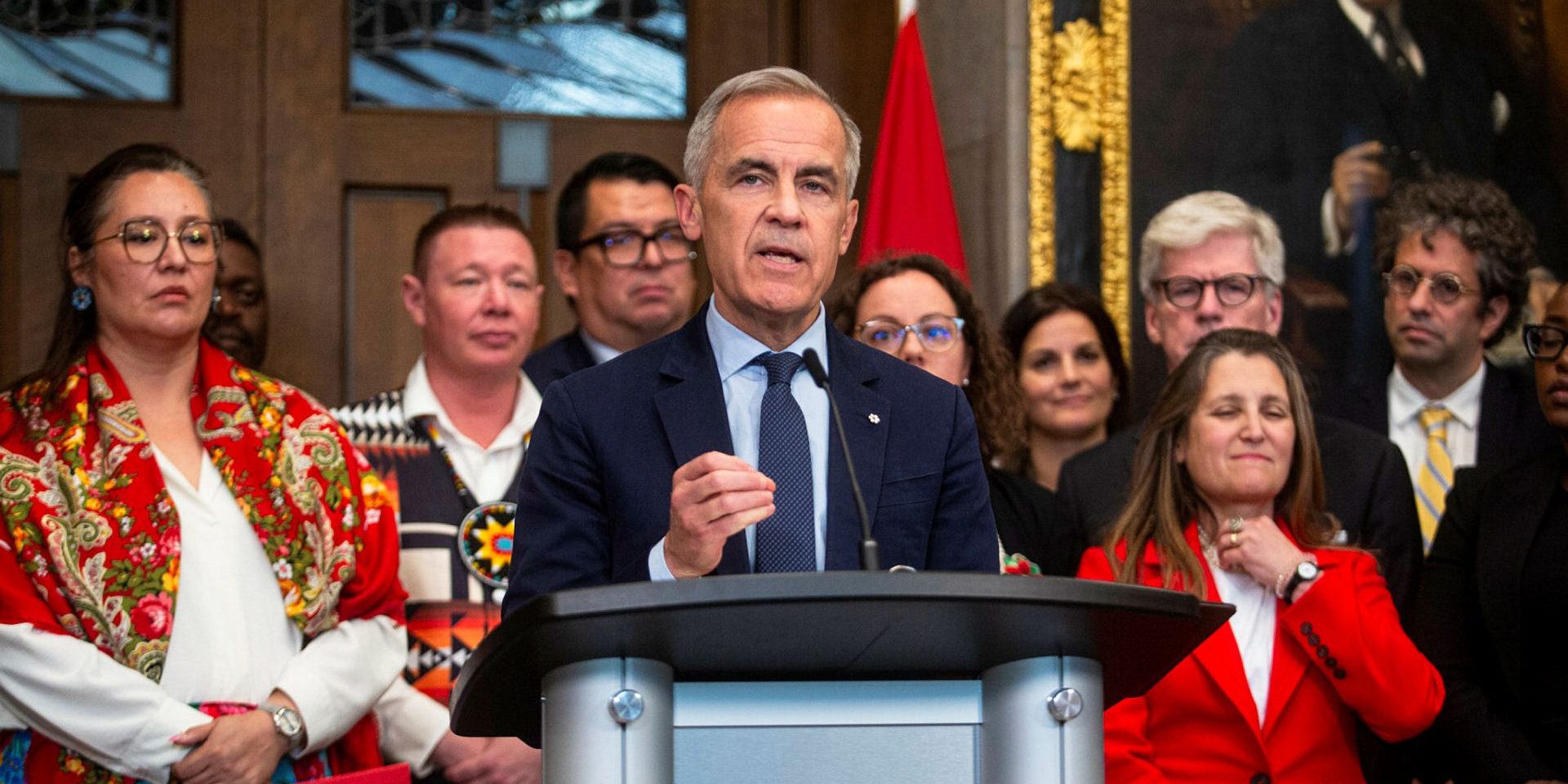Books, Big Ideas, Q&As
Q&A | Ontario First Nations launch court challenge against law fast-tracking major projects

Prime Minister Mark Carney’s cabinet is set to face its first legal challenge to Bill C-5, which was passed in a rush this spring, triggering the wrath of several Indigenous leaders.
Carney’s (Nepean, Ont.) landmark legislation allows handpicked projects deemed to be in the “national interest” to override several environmental laws, including the Species at Risk Act, and has been criticized for the strength of its language around consultations with First Nations that could be affected by those projects. It was passed by both the House and Senate and became law in 20 days, despite the objections of some opposition MPs and Senators.
Nine Ontario First Nations have launched litigation against the federal bill, and the Ontario government’s Bill-5, which similarly strips away several regulatory requirements to allow for the creation of “special economic zones.”
“Our case is not a fight against development, it is a fight against dangerous development pushed ahead by factless, thoughtless and reckless decision-making from government ministers behind closed doors with little accountability,” Alderville First Nation Chief Taynar Simpson said in a press release.
The Hill Times obtained an application document for the case that lists the grounds on which the federal and the provincial bills may be deemed “unconstitutional.” This includes the possibility that either government would approve projects without fully determining or addressing their “costs” to the First Nations and the environment.
The First Nations argue that the government would be failing to honour the Crown’s duty to advance reconciliation, and cite a previous 2018 case by the Mikisew Cree First Nation as a precedent. The Hill Times spoke to the chiefs’ senior counsel, Kate Kempton of Woodward and Co. Lawyers LLP, on the prospects, next steps, and demands of their case.
The following interview has been edited for length, style, and clarity.
Bill C-5 does not include the Indian Act as one of the laws it can bypass. What are the main aspects of C-5 that can render it unconstitutional?
“It’s the authorization for what are called ‘Henry the Eighth’ clauses, which gives [cabinet] sweeping powers to exempt a bunch of laws that apply to projects that they want to see go ahead.
“The environmental and other assessments serve at least three purposes. One is to gather facts necessary to understand what the impacts of anything might be, and how to address them before they occur.
“The second is to ensure that various protections are in place for things that we know need them, like endangered species, and First Nations.
“And the third is that it’s these processes, under other statutes, around which First Nations are usually engaged in the decision-making about what will happen to their homelands. That’s the engagement that is required by the constitution. And if you toss out all those legislative mandates, protections and processes, you toss out Indigenous engagement that goes along with it.”

The federal government has said it will carry out consultations with First Nations and will impose conditions on projects to obtain consent from Indigenous communities. Would that be enough from a legal standpoint?
“If the federal Crown really meant that they were not going to degrade and set back the constitutional requirement to engage First Nations in the very decisions that will affect their lands, then they wouldn’t have put in those clauses that give them the authority to waive a bunch of things from applying.
“The parts of the Building Canada Act we are challenging are sections six and 22. Sec. 6 is the deeming section, which deems that projects are headed for approval. It sort of biases it from the very beginning by saying that ‘projects we put forward are essentially going to get approved, we’re just going to have to figure out how.’ Which itself is very dangerous.
“The second offending clause is the Sec. 22, which allows them sweeping authority—regardless of what they’re saying now—it gives them the right, under this statute, to declare that a bunch of these statutory legislative provisions will not apply.
“If First Nations contact is limited to very preliminary information right at the beginning and a bunch of other assessments aren’t occurring, then the quality of that engagement is going to be grossly diminished. It’s not nearly enough. If they are really serious about what they are saying, then take out the two sections because you’re talking out of both sides of your mouth.”
Speaking of timelines, what happens next? The press release said it’s a fast-track litigation.
“It depends on a number of things, like the court schedule and what the Ontario and Canada governments do, but we could have a decision within a year to two years.
“The next step would normally be that we will prepare evidence in affidavit form, and Canada and Ontario would then prepare theirs, and then we would cross-examine each other on the written affidavit evidence. And then we go to a hearing. But there could be a number of other interim steps, including an injunction.”
What kind of injunction would that be?
“If the federal or provincial government proceed to take certain steps under these acts, despite the case being filed, and if those steps are threatening to First Nations rights and their lands, then we may, at that point, go to court seeking an interim ruling in this case … to get an injunction to stop them from taking those courses of action while this case is pending.
“I can’t predict at this point what might trigger instructions for my clients to bring an injunction. It might be more than just declaring something as a national interest project. It may be the step after that, which is actually approving it.”
What does the litigation seek in terms of the specific outcomes?
“In an ideal world, we would like the federal government to read this and realize that they’ve way overreached. … I’d like them to agree that they should themselves remove sections six and 22 and put through an amended version of the law right away and save us the headache. But that remains to be seen, and if not, then we may have to proceed to these other steps.”
A version of this piece first appeared in Politics This Morning, your go-to source for insider news, analysis, and updates on where all the key political players are that day. Get more insider coverage directly to your inbox from The Hill Times’ editor Peter Mazereeuw and reporter Riddhi Kachhela in this subscriber-only daily newsletter. Sign up here.
The Hill Times






 LICENSING
LICENSING PODCAST
PODCAST ALERTS
ALERTS













